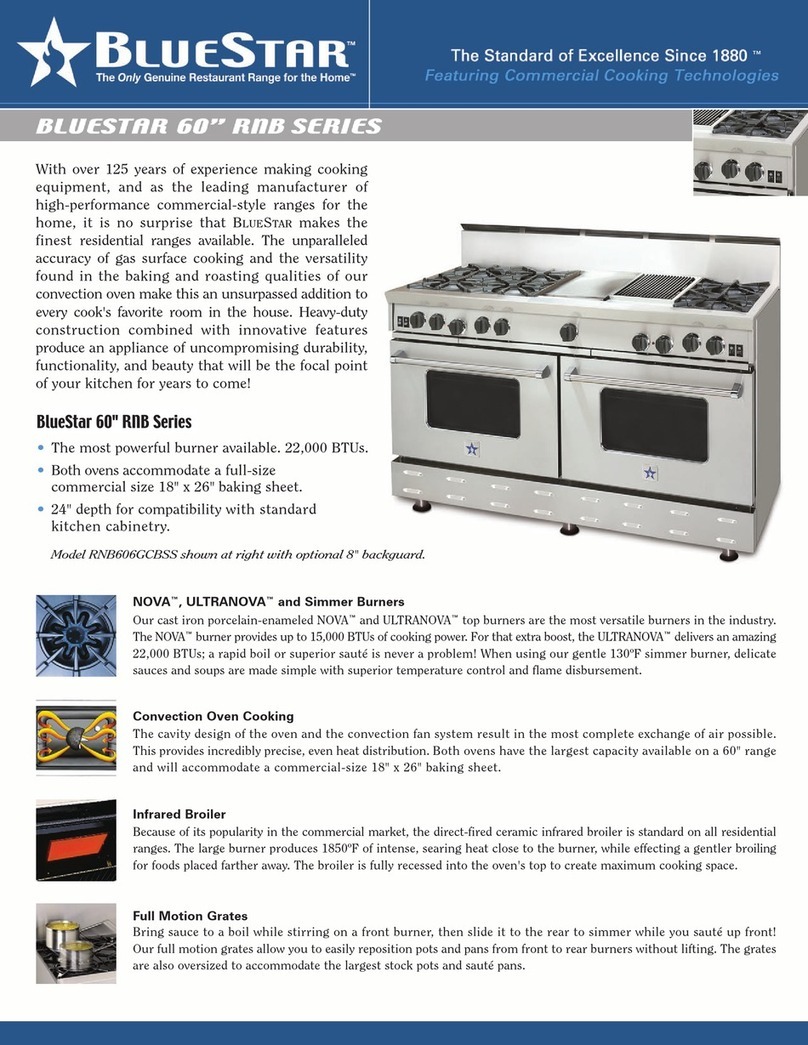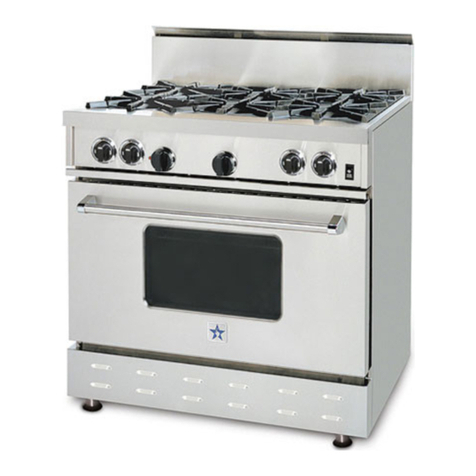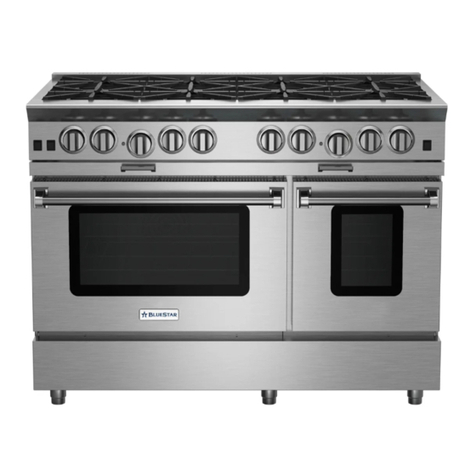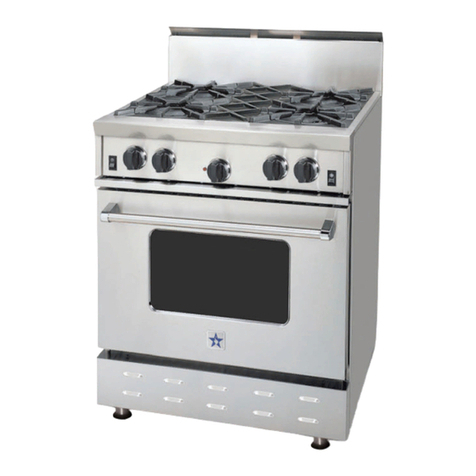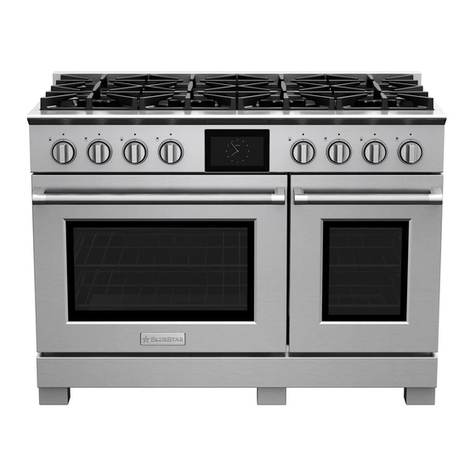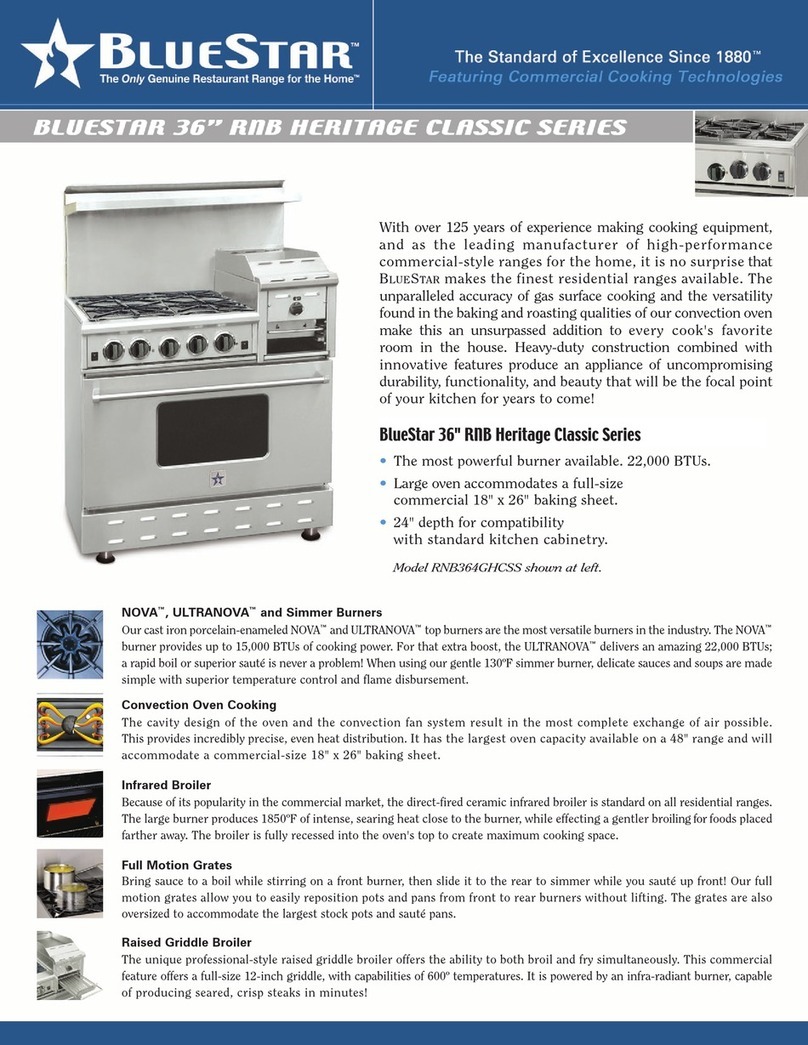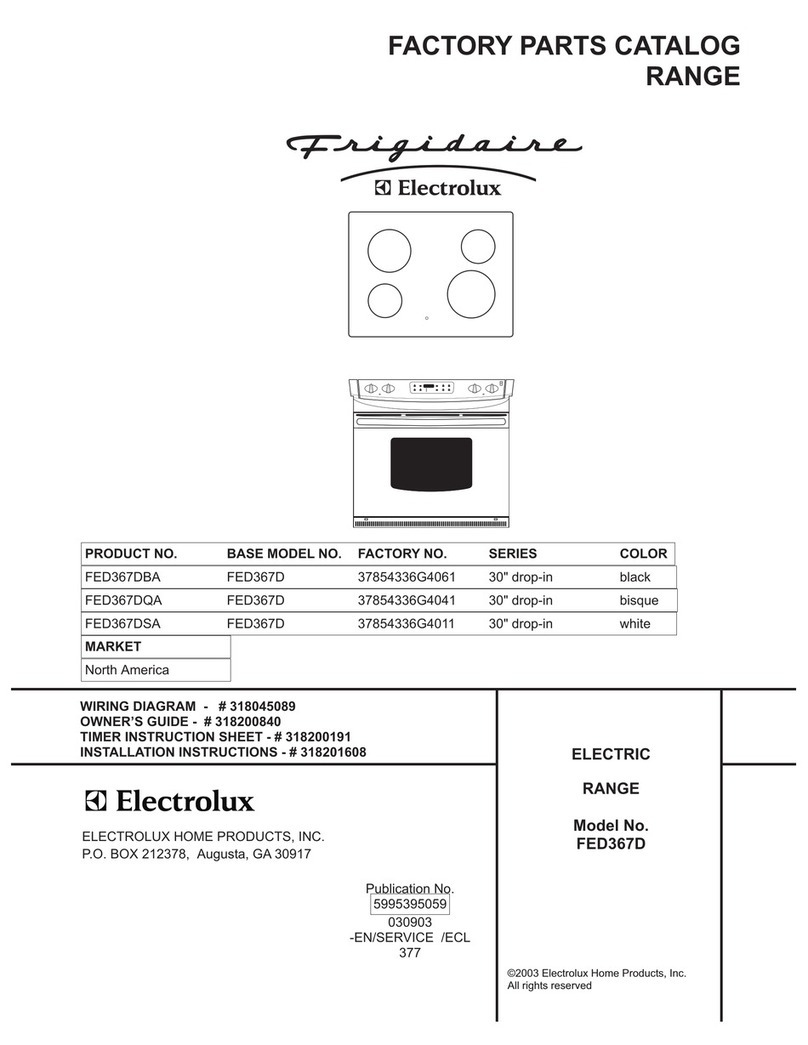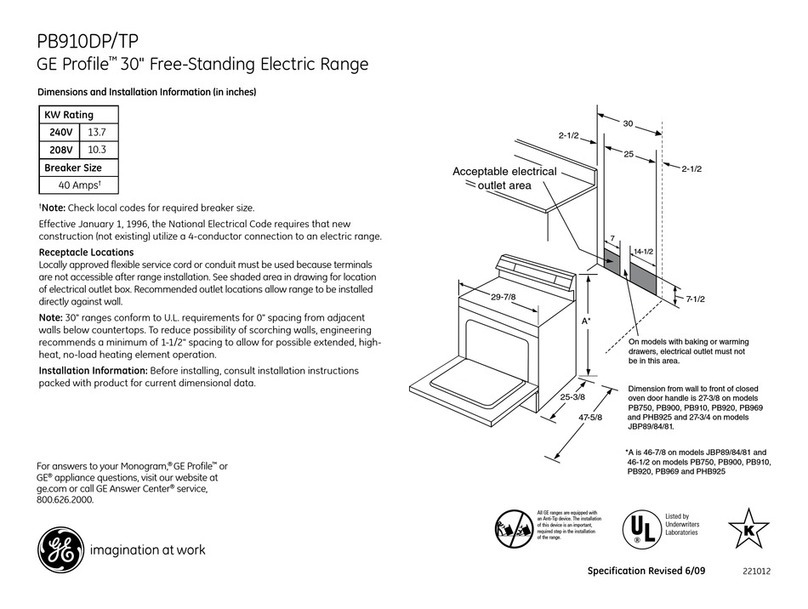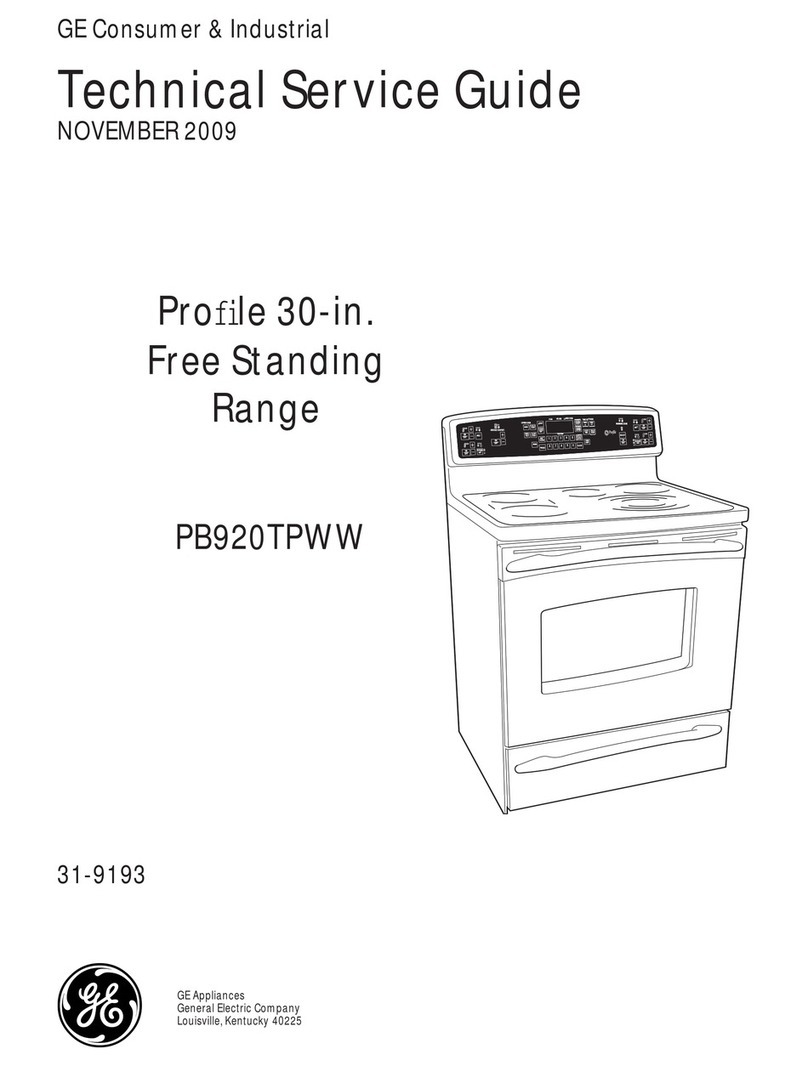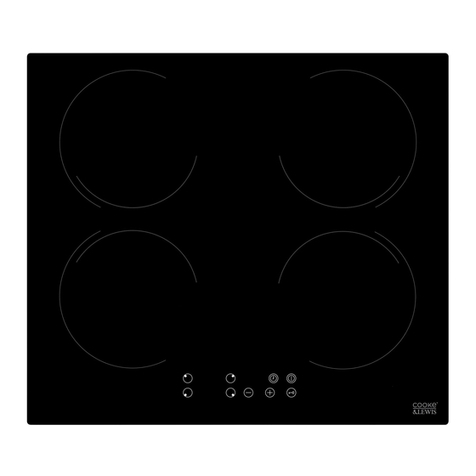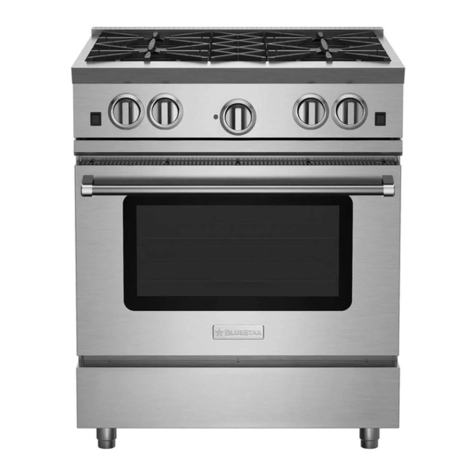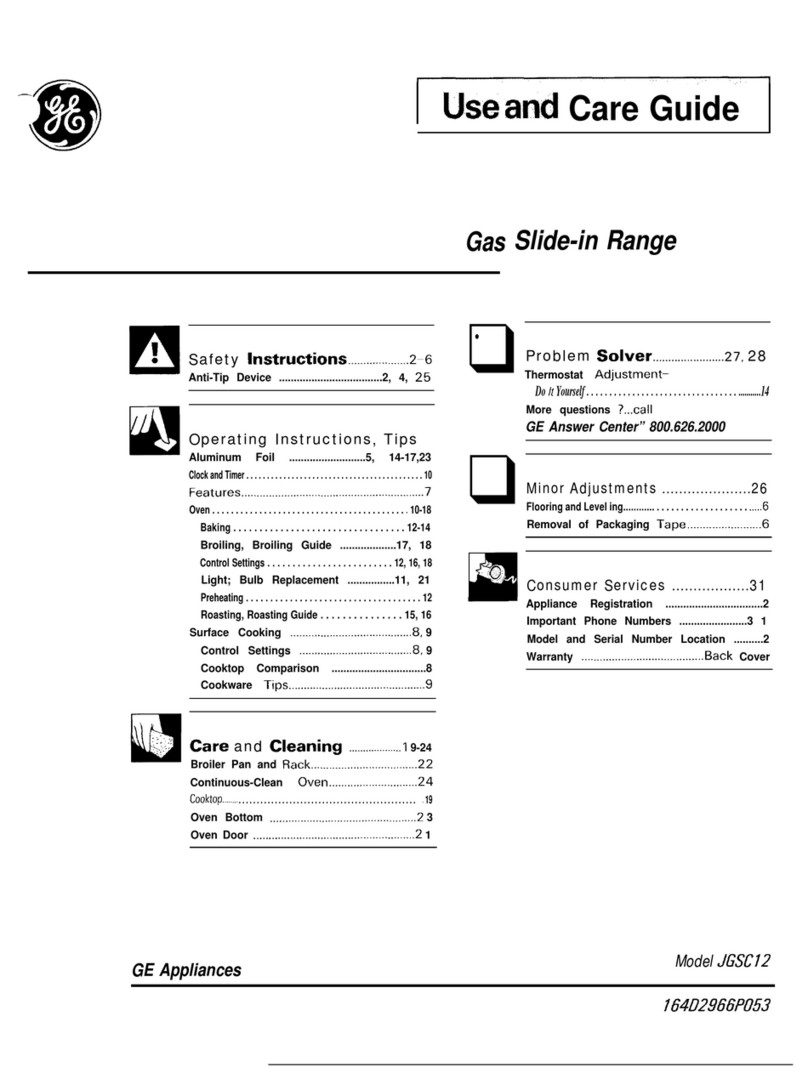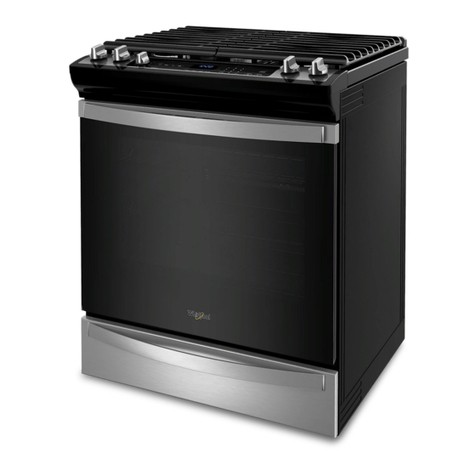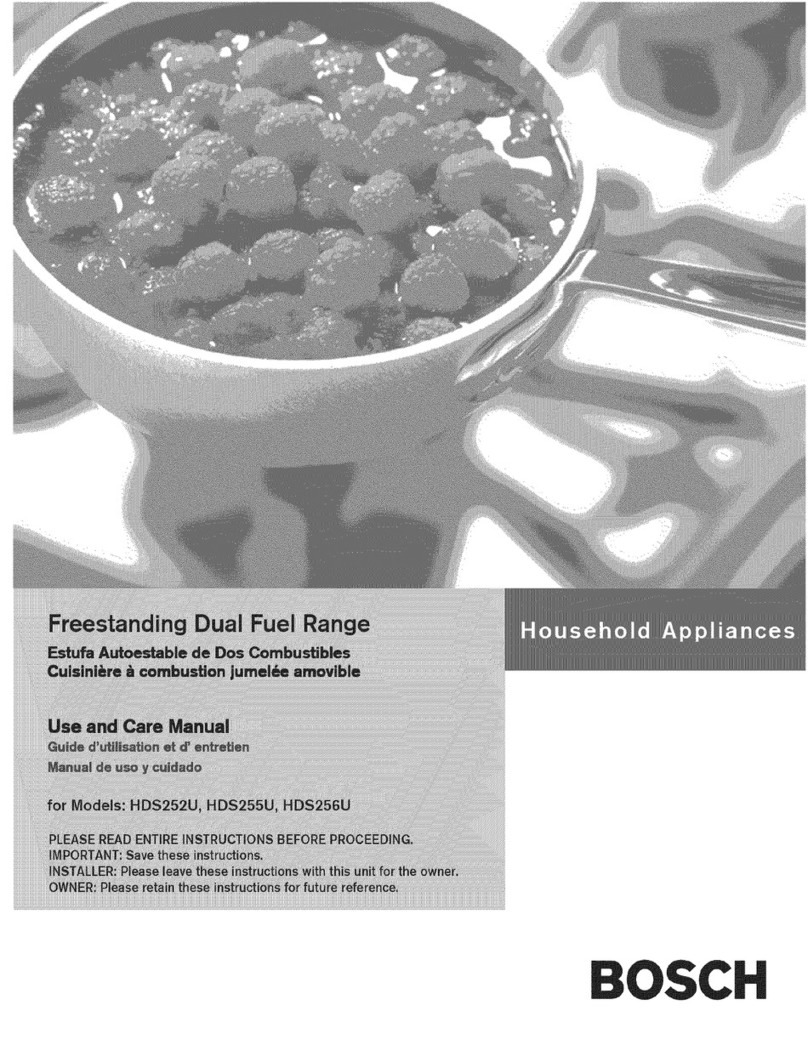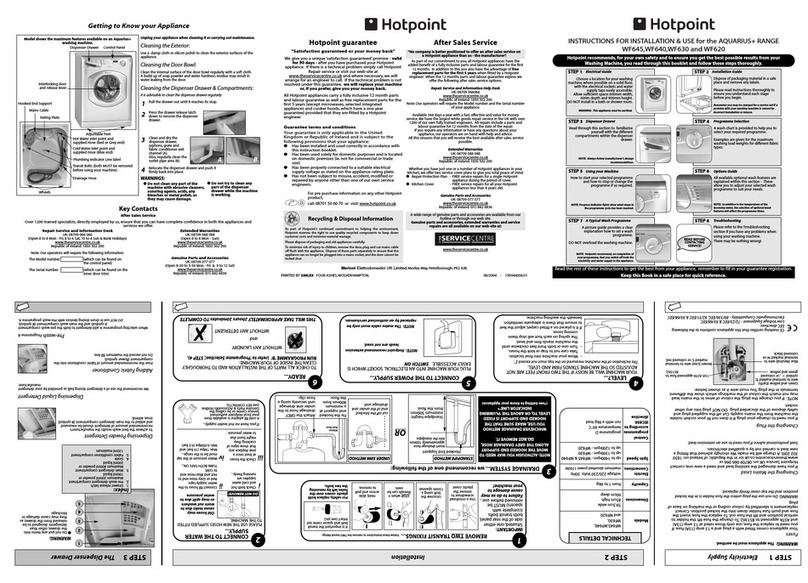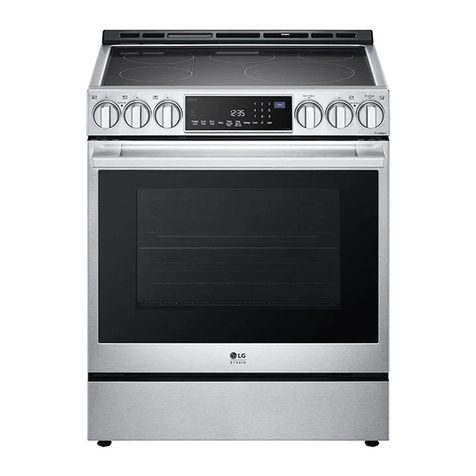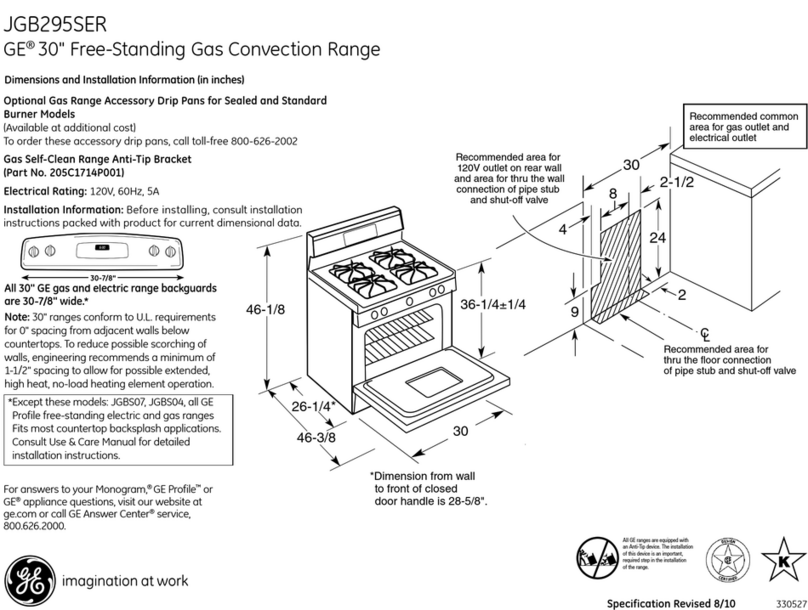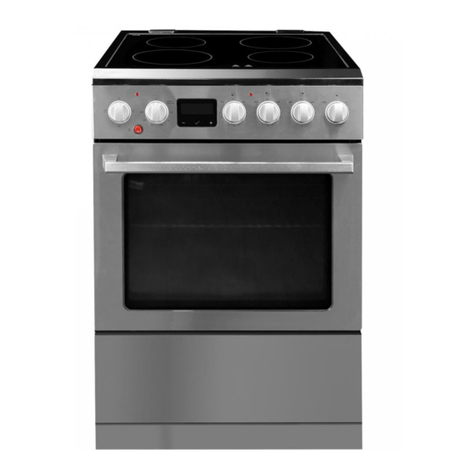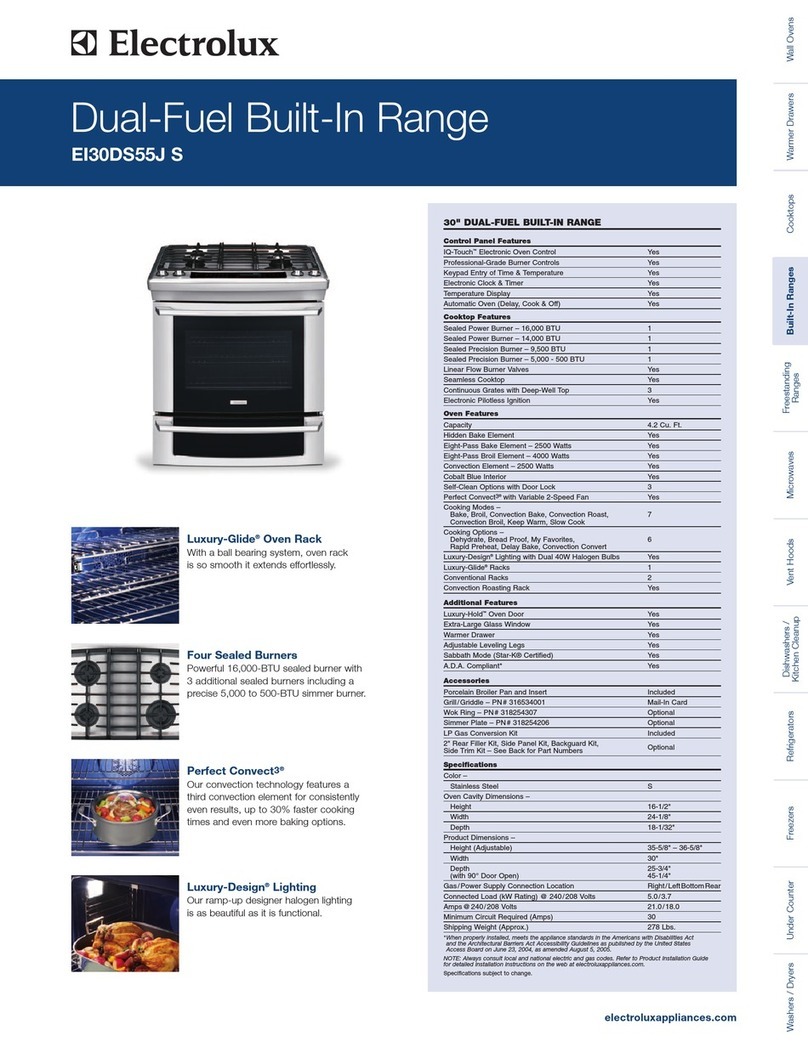
RGTNB 2008
GAS CONNECTIONS
1. The installation of this appliance must
conform with all applicable local codes.
In the absence of local codes, the installa-
tion must conform to the latest level of the
National Fuel Gas Code, ANSI Z223.1/
NFPA 54. In Canada, the installation
must be in accordance with the current
CAN/CGA B149.1 and B149.2.
2. This appliance can be configured to work
with either natural gas or LP gas. Verify
that the appliance and the incoming gas
supply are compatible. Check the rating
plate.
3. The gas supply line must be the same size
or larger than the gas inlet of the appli-
ance. Your appliance has either a ½”
NPT or ¾” NPT gas inlet connection. We
recommend the supply line be ¼” NPT
larger than the gas inlet of the appliance.
4. Sealant used on pipe joints must be resis-
tant to LP gas.
5. An installer provided manual shut-off
valve must be installed in the gas supply
line ahead of the appliance. This shut-off
must be easily accessible in case of emer-
gency.
6. All gas cooking equipment must have a
pressure regulator on the incoming service
line for safe and efficient operation. This
appliance is equipped with such a gas
pressure regulator. Incoming gas pressure
should be checked with a manometer.
The correct manifold pressure for natural
gas is 5.0” wc. For LP gas the correct
manifold pressure is 10” wc.
7. Incoming line pressure upstream of the
appliance should be 1.0” wc greater than
the operating manifold pressure. Service
pressure may fluctuate for a variety of rea-
sons. Under no circumstances should the
factory installed regulator be removed or
by-passed.
8. The factory installed pressure regulator
will withstand an input pressure of ½ PSI
(12” wc). If the incoming pressure ex-
ceeds the maximum rating a step-down
regulator is required.
9. The appliance and its individual shut-off
valve must be disconnected from the gas
supply line during any pressure testing in
excess of ½ PSI [3.5 kPa].
10. The appliance must be disconnected from
the gas supply by closing its individual
shut-off during any pressure testing less
than ½ PSI [3.5 kPa].
11. Check to see that all installer supplied
pipes and fittings are clear of debris,
threading chips or other foreign particles
before connecting the appliance to the
supply line. Such particles will clog ori-
fices and/or valves when pressure is ap-
plied. Service to clean such clogs is not
covered by your warranty.
12. The incoming gas supply is brought from
the inlet pipe. This is the only connection
required via the installer-supplied shut-off
valve.
13. If the appliance is to be installed with
flexible couplings and/or a “quick discon-
nect” the installer must use a commer-
cially approved AGA Design certified
flexible connector at least ½” NPT that
complies with ANSI Z21.41. In Canada
the connector must comply with CAN
16.10-88 and the “quick disconnect” de-
vice must comply with CAN 16.19M-79
and installed with a strain relief device.
14. Before putting the appliance into service
test all gas connections for leaks. Use a
soapy solution. DO NOT USE AN OPEN
FLAME TO CHECK FOR LEAKS. Such
a procedure is dangerous and it may not
detect all the small leaks that a soapy so-
lution will.
15. Air shutter adjustments are preset at the
INSTALLATION




















